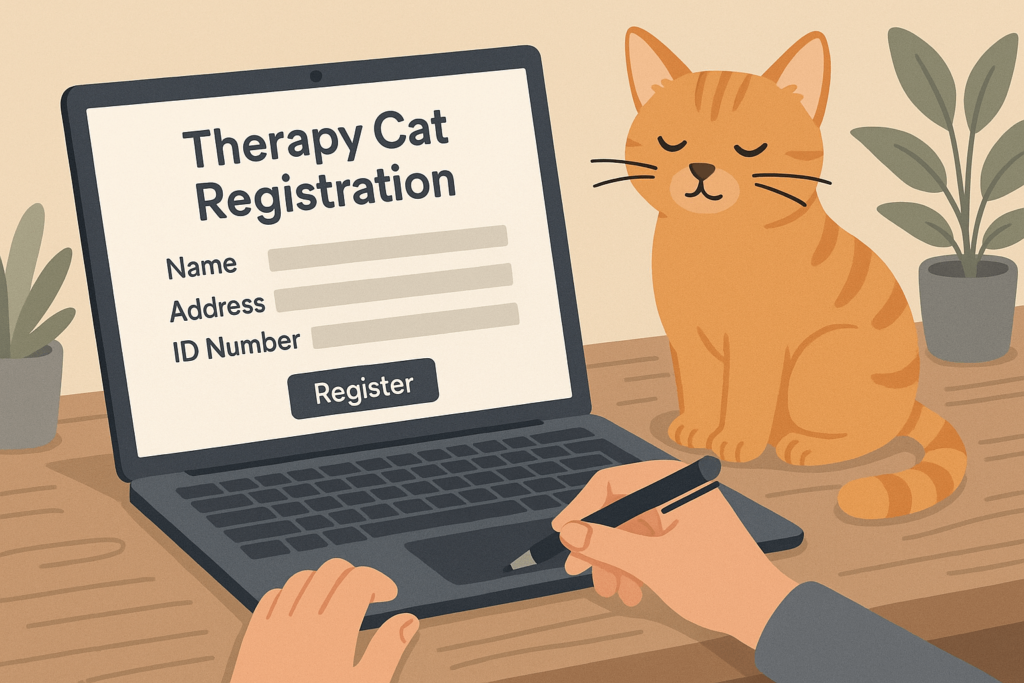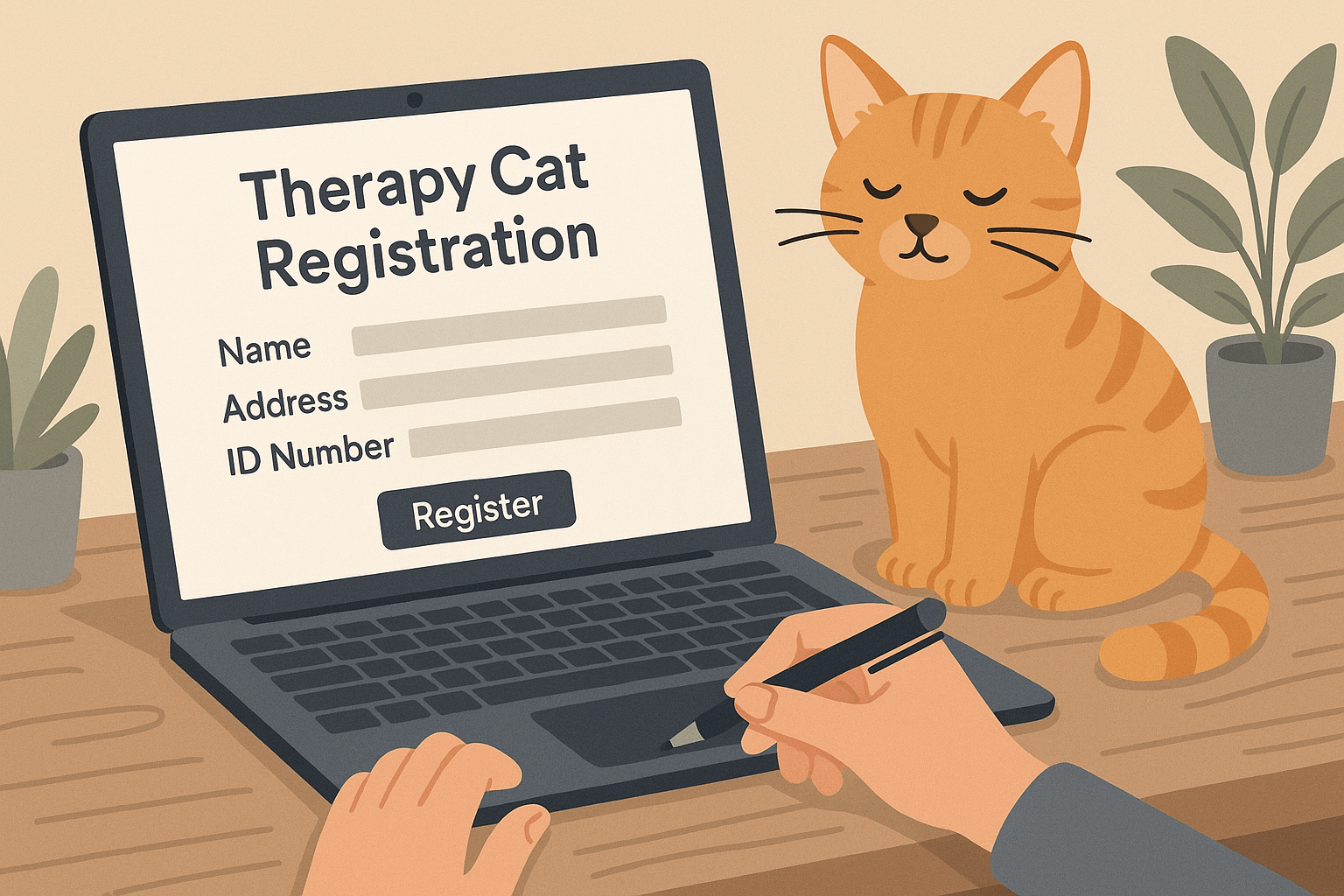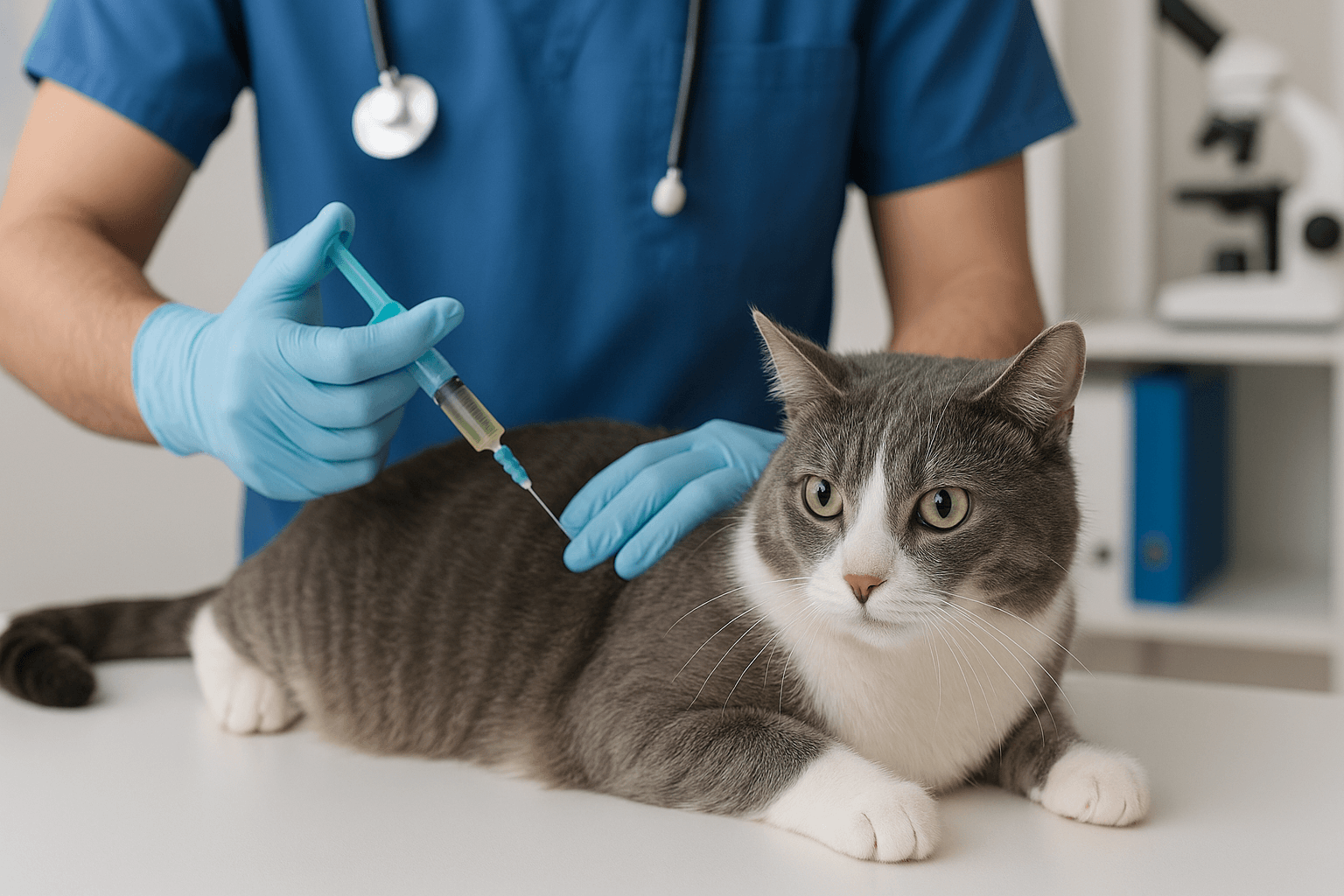How to Register a Therapy Cat
Therapy cats play a vital role in providing comfort, emotional support, and companionship to individuals in need. From hospitals to schools and nursing homes, these feline companions bring joy and healing to countless lives. But how do you register your cat as an official therapy animal? While the process may seem daunting at first, it’s entirely achievable with the right preparation and understanding of the steps involved. This guide will walk you through everything you need to know about registering your cat as a therapy animal, ensuring they’re ready to make a positive impact in their new role.
Key Steps to Register Your Therapy Cat
Registering a therapy cat involves several important steps, from training to certification. Understanding each stage ensures your cat is prepared for their therapeutic duties.
Evaluate Your Cat’s Temperament:
Not all cats are suited for therapy work. Assess whether your cat is calm, friendly, and comfortable around strangers and unfamiliar environments.Begin Basic Obedience Training:
Teach your cat essential commands like “sit,” “stay,” and “come.” Consistent training helps them remain focused and well-behaved in public settings.Socialize Your Cat Regularly:
Expose your cat to different people, sounds, and environments to build their confidence and adaptability.Research Therapy Animal Organizations:
Look into reputable organizations that certify therapy animals. Each has specific requirements, so choose one that aligns with your goals.Schedule a Behavioral Evaluation:
Most organizations require an assessment to ensure your cat meets their standards for behavior and temperament.
By following these steps, you can set a strong foundation for your cat’s journey as a certified therapy animal.

Training Tips to Prepare Your Cat for Therapy Work
Proper training is crucial to ensure your cat thrives in therapy settings. These tips will help you prepare your feline companion for their new responsibilities.
Use Positive Reinforcement:
Reward your cat with treats, praise, or toys when they exhibit desired behaviors. Positive reinforcement encourages consistent progress.Practice Desensitization Techniques:
Gradually introduce your cat to potentially stressful stimuli, such as loud noises or medical equipment, to reduce anxiety.Teach Them to Tolerate Handling:
Train your cat to remain calm during physical interactions, such as being petted or examined by strangers.Simulate Real-Life Scenarios:
Create mock therapy sessions at home to familiarize your cat with the types of environments they’ll encounter.Focus on Stress Management:
Monitor your cat’s stress levels during training and provide breaks as needed to prevent burnout.
With patience and consistency, your cat can develop the skills and confidence needed to excel as a therapy animal.
Check this guide 👉Therapy Cat Training: Best 7 Expert Tips!
Check this guide 👉What Is a Cat Behaviorist? Best 7 Expert Tips!
Qualities of a Good Therapy Cat | Challenges to Address During Training |
|---|---|
Calm and patient demeanor | Fear of unfamiliar environments |
Comfortable around strangers | Overstimulation in crowded spaces |
Ability to tolerate handling | Anxiety around loud noises or sudden movements |
Adaptable to various settings | Resistance to wearing gear like vests |
Strong bond with their handler | Difficulty focusing in distracting scenarios |
Benefits of Registering Your Cat as a Therapy Animal
Registering your cat as a therapy animal offers numerous benefits, not only for the individuals they assist but also for you and your feline companion.
Improved Mental Health for Others:
Therapy cats provide comfort and emotional support, helping reduce stress, anxiety, and feelings of loneliness in those they interact with.Enhanced Bond Between You and Your Cat:
The training and certification process strengthens the connection between you and your cat, fostering trust and teamwork.Access to Specialized Settings:
Registered therapy cats are often welcomed in hospitals, schools, and nursing homes, where they can make a meaningful impact.Recognition and Credibility:
Certification provides legitimacy, making it easier to participate in organized therapy programs and events.Personal Fulfillment:
Knowing your cat is making a difference in people’s lives can be incredibly rewarding and fulfilling for you as their handler.
These benefits highlight the profound impact therapy cats can have on both individuals and communities.
Common Misconceptions About Therapy Cats
Despite growing awareness of therapy animals, several misconceptions persist about therapy cats and their roles. Addressing these myths helps clarify their purpose and value.
Therapy Cats Are the Same as Emotional Support Animals:
Unlike emotional support animals, therapy cats are trained to provide comfort to others in structured settings, not just their owners.Any Cat Can Become a Therapy Animal:
While many cats have the potential, not all possess the temperament or training required for therapy work.Therapy Cats Don’t Need Certification:
While certification isn’t legally required, it’s highly recommended to ensure your cat meets professional standards.Therapy Cats Only Work in Hospitals:
Therapy cats serve in various environments, including schools, libraries, and rehabilitation centers.Therapy Work Is Stressful for Cats:
With proper training and care, therapy work can be enjoyable and fulfilling for cats who thrive on human interaction.
Dispelling these misconceptions promotes a better understanding of the unique role therapy cats play in society.
How to Choose the Right Therapy Organization
Selecting the right organization to register your therapy cat is a critical step in the process. Consider these factors to find the best fit for your needs and goals.
Reputation and Credibility:
Research reviews and testimonials to ensure the organization is respected within the therapy animal community.Certification Requirements:
Compare the prerequisites and expectations of different organizations to find one that aligns with your cat’s abilities.Support and Resources:
Look for organizations that offer ongoing support, training materials, and networking opportunities for handlers.Cost and Accessibility:
Evaluate the financial commitment and geographic accessibility of the organization’s programs.Mission Alignment:
Choose an organization whose values and mission resonate with your personal goals for therapy work.
Selecting the right organization sets the stage for a successful and fulfilling therapy journey.
Preparing Your Home for a Therapy Cat
Creating a supportive environment at home is essential for raising a happy and healthy therapy cat. These tips will help you prepare your space for success.
Designate a Quiet Retreat Area:
Provide your cat with a calm, private space where they can relax and recharge after therapy sessions.Stock Up on Training Supplies:
Keep essentials like treats, clickers, and grooming tools readily available for training and maintenance.Create a Safe Environment:
Remove hazards and ensure your home is secure to prevent accidents or escapes.Maintain a Consistent Routine:
Establish regular feeding, play, and training schedules to keep your cat balanced and content.Monitor Their Health Regularly:
Schedule routine vet check-ups to ensure your cat remains physically fit for therapy work.
A well-prepared home supports your cat’s well-being and enhances their ability to succeed as a therapy animal.
Signs Your Cat Is Ready for Therapy Work
Before embarking on therapy visits, it’s important to recognize signs that your cat is prepared for this responsibility. These indicators ensure they’re ready to thrive in therapeutic settings.
Consistent Calmness in New Environments:
Your cat remains relaxed and composed, even in unfamiliar or busy surroundings.Positive Interactions with Strangers:
They enjoy meeting new people and seek out affection without hesitation.Ability to Follow Commands Reliably:
Your cat consistently responds to basic commands and behaves predictably in public.Comfort with Being Handled:
They tolerate petting, grooming, and gentle restraint without showing signs of stress.Enjoys Social Engagement:
Your cat actively engages with people and appears energized by their presence rather than overwhelmed.
Recognizing these signs ensures your cat is fully prepared to make a positive impact in their therapy role.
Frequently Asked Questions About Registering a Therapy Cat
What qualifications does my cat need to become a therapy animal?
Your cat should have a calm temperament, basic obedience skills, and pass a behavioral evaluation conducted by a recognized organization.
How long does the registration process take?
The timeline varies depending on your cat’s readiness and the organization’s requirements, but it typically takes several weeks to months.
Do therapy cats need special insurance?
Some organizations recommend liability insurance to protect against unforeseen incidents during therapy visits.
Can my cat wear a therapy vest or identification tag?
Yes, many handlers use vests or tags to identify their therapy cats and signal their role in public settings.
Is there a cost associated with registering a therapy cat?
Costs vary by organization and may include fees for evaluations, certifications, and training materials.
Making a Difference with Your Therapy Cat
Registering your cat as a therapy animal is a rewarding journey that allows you to share their unique gifts with those in need. By investing time in training, certification, and ongoing care, you can unlock your cat’s potential to bring comfort and joy to countless individuals. Whether visiting a hospital, school, or community center, your therapy cat has the power to brighten lives and create lasting connections. With dedication and love, you and your feline companion can embark on this fulfilling path together, leaving a lasting impact wherever you go.
Is the Rubber Tree Cat Safe? Best 7 Expert Tips! Discover expert advice on keeping rubber plants safely in cat-friendly homes and learn top tips for pet-safe plant care.
Low Red Blood Cell Count in Cats: Best 7 Expert Tips! Discover causes, symptoms, and treatment options for feline anemia. Learn how to support your cat’s health effectively with expert advice.
Understanding Megacolon Treatment: Best 7 Expert Tips! Discover effective strategies to manage feline megacolon, from dietary changes to surgical options, ensuring your cat’s comfort and long-term health.
How to Register a Therapy Cat: Best 7 Expert Tips! Discover essential steps to certify your cat as a therapy animal, prepare them for training, and make a meaningful impact in therapeutic settings.




